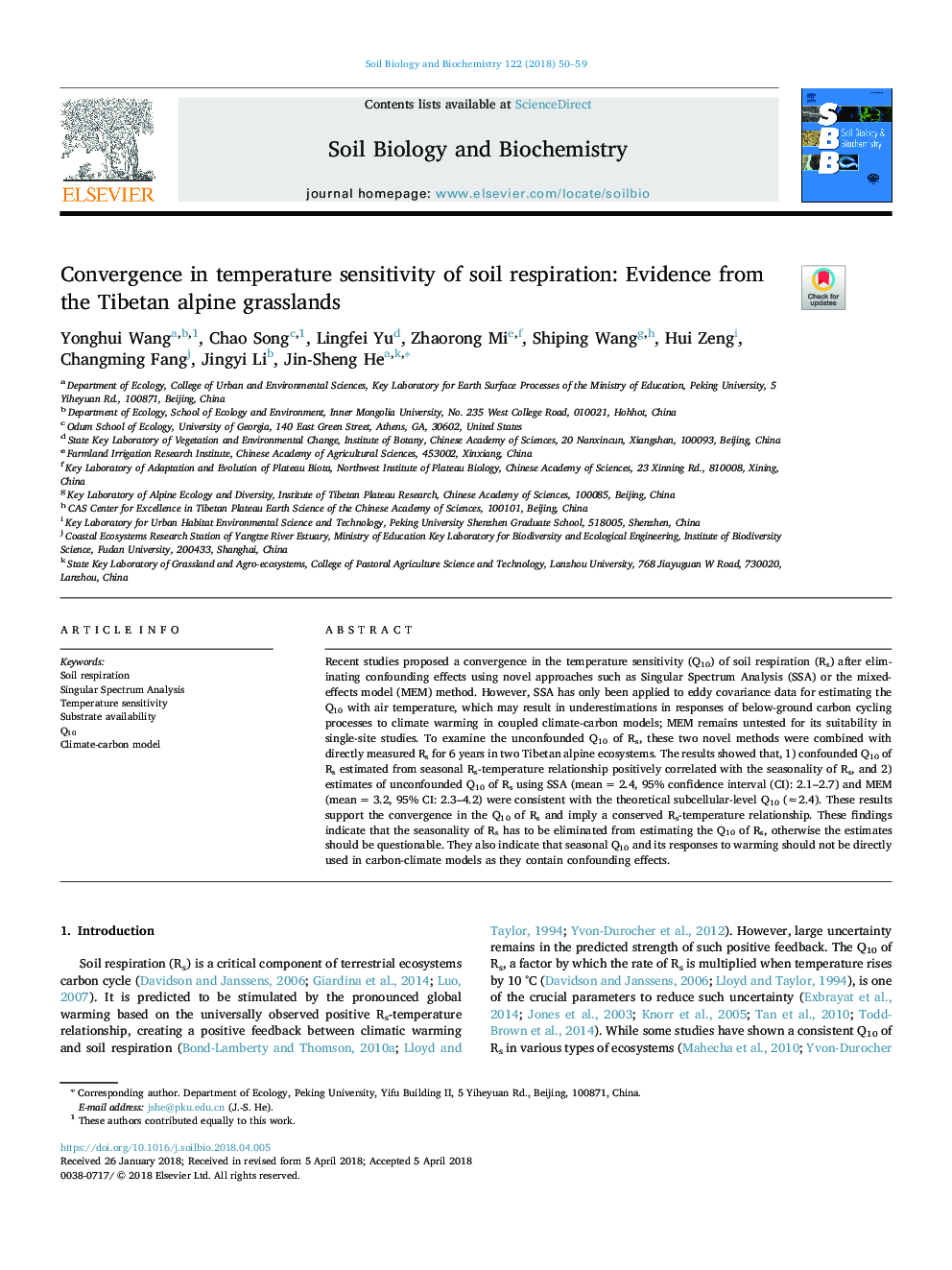| Article ID | Journal | Published Year | Pages | File Type |
|---|---|---|---|---|
| 8362669 | Soil Biology and Biochemistry | 2018 | 10 Pages |
Abstract
Recent studies proposed a convergence in the temperature sensitivity (Q10) of soil respiration (Rs) after eliminating confounding effects using novel approaches such as Singular Spectrum Analysis (SSA) or the mixed-effects model (MEM) method. However, SSA has only been applied to eddy covariance data for estimating the Q10 with air temperature, which may result in underestimations in responses of below-ground carbon cycling processes to climate warming in coupled climate-carbon models; MEM remains untested for its suitability in single-site studies. To examine the unconfounded Q10 of Rs, these two novel methods were combined with directly measured Rs for 6 years in two Tibetan alpine ecosystems. The results showed that, 1) confounded Q10 of Rs estimated from seasonal Rs-temperature relationship positively correlated with the seasonality of Rs, and 2) estimates of unconfounded Q10 of Rs using SSA (meanâ¯=â¯2.4, 95% confidence interval (CI): 2.1-2.7) and MEM (meanâ¯=â¯3.2, 95% CI: 2.3-4.2) were consistent with the theoretical subcellular-level Q10 (â2.4). These results support the convergence in the Q10 of Rs and imply a conserved Rs-temperature relationship. These findings indicate that the seasonality of Rs has to be eliminated from estimating the Q10 of Rs, otherwise the estimates should be questionable. They also indicate that seasonal Q10 and its responses to warming should not be directly used in carbon-climate models as they contain confounding effects.
Related Topics
Life Sciences
Agricultural and Biological Sciences
Soil Science
Authors
Yonghui Wang, Chao Song, Lingfei Yu, Zhaorong Mi, Shiping Wang, Hui Zeng, Changming Fang, Jingyi Li, Jin-Sheng He,
